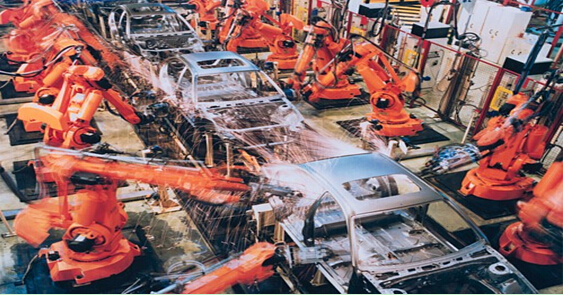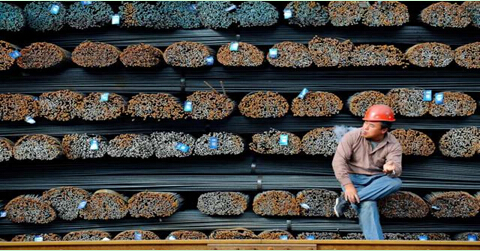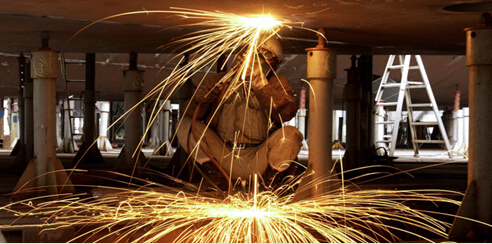Japanese Shipbuilders: Robotic Labor to eventually replace human Labor

Robots in Japan building cars... Japanese Ship builders are modifying robots to build new vessels in order to stay competitive as the labor pool continues to shrink in Japan.
In recent years Japanese shipyards have struggled with new orders, even though the yen has weakened which has made shipbuilding in Japan cheaper than ever before, Japan just does not have the excess labor pool for massive ship building that it had in the past.
Japanhas been struggling to compete with huge labor pools in China and Korea that can assign an army of worker on each new vessel order; it just does not have the excess labor to stay competitive. Japan is looking at less than 75 million able-bodied Japanese workers under the age of 60. Figures peg that as about 60 percent of Japans population.
It is predicted that Japans labor shortage is going to hit every single labor intensive industry by 2060, which will curb all future economic growth effective killing Japans economy. The Japanese solution to the problem: Innovate to stay relevant with Robotic Labor

A sole Japanese laborer takes a break from stacking rebar...
Japans Robotic innovation cannot solve the labor shortage problems overnight as the Robotic technology is still not mature enough to completely eliminate human labor from the construction of new shipping vessels.

Japan faces a culture crisis as well as a labor crisis as foreigners construct “Japanese built” Vessels...
To address the labor shortage problem while the Robotic technology is still maturing, the government has decided to hire outsiders to help construct Japanese-made shipping vessels; they have begun drafting engineers from Vietnam and America, as well expanding the presence of ship building vocational schools to train more local workers.
TsuneishiShipbuilding Company has defied Japanese Shipbuilding tradition in order to stay competitive they have expanded to Japanese owned-foreign operated shipyards in China and Philippines.
In order to stay relevant in the Maritime Vessel Construction Market Japan is relying on its past reputation as a manufacturer that focuses on quality, and reliability for a premium price.
Mitsui Shipbuilding has designed a new bulk carrier that is both more streamlined & aerodynamic than conventional bulk carriers; it also includes a new “green” fuel-efficient technology that burns 25% less bunker fuel, this state of the art Japanese Bulk Carrier will help carriers save tens, if not hundreds of millions in bunker fuel costs during the vessels career.
TheShipbuilders Association of Japan chairman Kazuo Tsukuda recently said that Japan is designing vessels in anticipation of a stricter environmental regulatory environment. It is current believe amongst the Japanese Shipbuilding association that vessel design should be compliant with what we anticipate to be environmental regulations 10 years from now based on the way legislation is moving not just in America, but worldwide.
New regulations will be based upon Japanese vessels technology, pushing older non-compliant polluting vessels out of service, thus creating a demand for our regulatory compliant vessels. Korea & China can only produce low-quality vessels that must be retrofitted within a couple years to meet new environmental standards, costing shippers millions. Japan is confident that it’s foresight into environmental regulation will revive its shipping industry.
Questions / Comments? Contact: Mark@cmaritime.com.cn
HEADLINES
- Do shipping markets want Biden or Trump for the win?
- All 18 crew safe after fire on Japanese-owned tanker off Singapore
- Singapore launching $44m co-investment initiative for maritime tech start-ups
- Cosco debuts Global Shipping Industry Chain Cooperation Initiative
- US warns of more shipping sanctions
- China continues seaport consolidation as Dalian offer goes unconditional